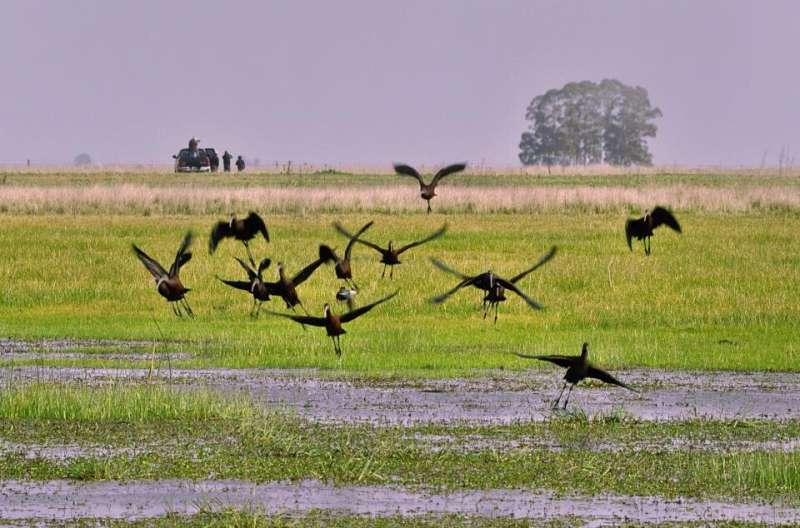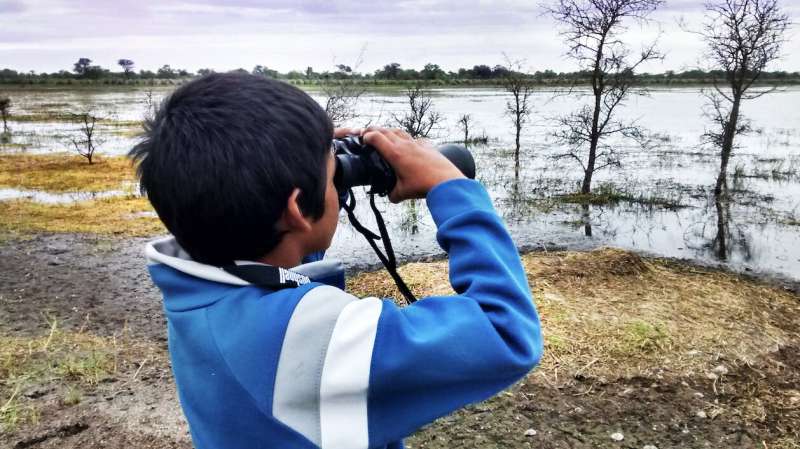Lead ammunition polluting Argentina

Pollution from lead ammunition causes environmental health problems in Argentina, and progress is underway to find viable replacements for lead shot, according to an overview of lead pollution from hunting in the country. Argentina's pioneering awareness and attention to this problem may help others address this global health issue that threatens humans, animals and landscapes.
The report, compiled by the University of California, Davis' One Health Institute and Universidad Nacional del Centro de la Provincia de Buenos Aires in Argentina, was published April 12 in the journal Ambio.
"Lead pollution is one of the very few environmental problems for which there is a simple solution: Switch from lead to nontoxic ammunition," said lead author Marcela Uhart, a wildlife veterinarian with the UC Davis One Health Institute and director of the Latin America Program within UC Davis' Karen C. Drayer Wildlife Health Center. "We're not saying 'Don't hunt.' We're not asking anyone to change their livelihood or lifestyle. It just needs to be done sustainably, without introducing poison to the land, water, animals and people who live here."
High-end hunting
Hunting is a lucrative industry in Argentina, where registered outfitters cater to mostly foreign clients seeking high-end hunting tourism experiences on private lands, particularly for doves and ducks.
Uhart said hunters and outfitters in the country recognize the problem, and some have been working closely with the researchers and government over the past decade to find viable solutions. Many have said they would switch to nontoxic shot if it became more easily available and affordable.

Discussions underway in Argentina indicate that nontoxic steel shot could be manufactured locally as soon as this spring or summer. This would be a very important step forward, as it could help drive down the cost of nontoxic ammunition and encourage the shift away from lead shot.
Lead in the land, animals and people
Roughly 10,000 hunters visit the "dove shooting capital" of Córdoba province each year, adding between 210 and 480 tons of lead to the environment. Conservative estimates suggest at least 56 tons of lead from ammunition were added to wetlands in Santa Fe province between 2007 and 2009, one of Argentina's major sites for waterfowl hunting.
Previous studies, referenced in the report, found accumulations of lead from spent shot in:
- The bones and bodies of hunter-killed ducks
- Wetlands and rice fields where waterfowl hunting is practiced
- Plants regularly eaten by wildlife and domestic livestock in these areas
- The blood and baby teeth of Argentinian children who ate hunted game
Lead, a known toxicant that affects humans and animals, accumulates in the body over time, causing severe systemic disorders. Children are particularly vulnerable and can suffer permanent and severe health effects, particularly in their central nervous system.

Levels of lead referred to in the paper for wildlife and wetlands match reports from other parts of the world with severe contamination problems, and represent just a fraction of the problem. Exposure to lead from bullets has been documented in the near-threatened Andean condor in Argentina, as well. The impacts of lead ammunition pollution on the California condor, demonstrated in part by UC Davis and its partners, was a major reason that state issued a full lead ammunition ban, which goes into effect this July.
Science to policy
In an example of science leading to policy change, Argentina has taken major steps over the past decade toward addressing this issue. This includes working with the authors to engage key stakeholders at multiple meetings, shooting clinics and through conservation-education community outreach efforts. Some provinces banned lead shot used for waterfowl hunting as soon as the authors shared evidence of the problem.
"We want to commend Argentina for being at the frontier of addressing this while recognizing there is a lot more to be done," Uhart said. "This is a global environmental problem that is serious but avoidable. It's a real One Health example, impacting everyone—humans, the environment and wildlife. But we can change it right now, and there is proof it has worked."
The paper provides 10 recommendations for policymakers in Argentina to prioritize. They include:
- Grant state policy status to halting lead toxicity from spent ammunition.
- Encourage and entice local manufacturing and availability of nontoxic ammunition.
- Educate foreign hunters visiting Argentina on local efforts to ban lead shot and existing regulations.
- Increase awareness on ill-effects to human health through dietary intake and the need to avoid exposure through all pathways, particularly in children.
More information: Marcela Uhart et al. Lead pollution from hunting ammunition in Argentina and current state of lead shot replacement efforts, Ambio (2019). DOI: 10.1007/s13280-019-01178-x
Journal information: AMBIO
Provided by UC Davis

















